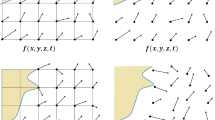Abstract:
We examine the mathematical constraints on the filtering operation in large-eddy simulation (LES), and the physical constraints on the formulation of subgrid scale (SGS) models. The mathematical constraints on filtering arise from the assumption of commutativity between the filtering operation and the differential operators: this breaks down for finite domains and for non-uniform filter kernels. The physical constraints on the modelling are twofold; invariance principles require any model to be invariant under a group of transformations: the most stringent of these being the principle of frame indifference. In addition, realizability requires that the SGS model should have the same mathematical properties as the term it replaces, which leads to further constraints on the modelling. Finally, we investigate the effects of commutation and realizability for two simulated cases: forced homogeneous isotropic turbulence in a box and fully developed channel flow. In particular, we look for correlations between the commutation errors and the non-realizable regions, and the large-scale resolved flow structures in the simulations.
Similar content being viewed by others
Author information
Authors and Affiliations
Additional information
Received: 17 June 1996 and accepted 3 April 1997
Rights and permissions
About this article
Cite this article
Fureby, C., Tabor, G. Mathematical and Physical Constraints on Large-Eddy Simulations . Theoret Comput Fluid Dynamics 9, 85–102 (1997). https://doi.org/10.1007/s001620050034
Issue Date:
DOI: https://doi.org/10.1007/s001620050034




